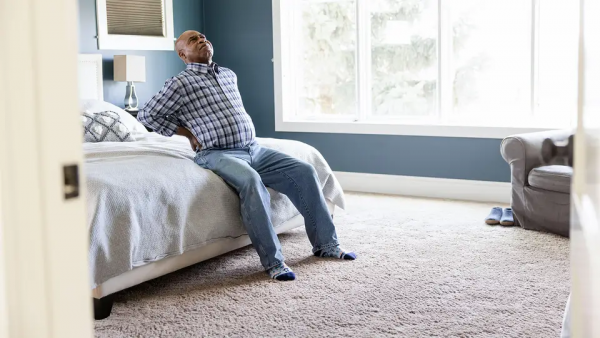Chiropractic Care for Veterans: A Pragmatic Randomized Trial Addressing Dose Effects for cLBP (VERDICT)
Project Summary
Low back pain is the number one cause of global disability. Chronic low back pain affects veterans and military members at a much higher rate than the general public, as does the use and overuse of opioids. The VERDICT project evaluates patient and clinician perceptions of non-specific treatment factors, effectiveness of study interventions, and the impact of varying doses of standard chiropractic care and chronic pain management on clinical outcomes across three VA facilities.
Co-Principal Investigators

Christine Goertz, DC, PhD

Cynthia Long, PhD
Impact and Contribution to PMC and Society
Low back pain impacts 540 million people throughout the world, with a 200 billion estimated annual cost in the United States alone. Chronic-Low-Back Pain (cLBP) related disability is rampant within our nation’s Veteran population, given their high rates of musculoskeletal disease. The combination of cLBP and high medication use negatively impacts Veterans’ work productivity and quality of life, and generates substantial risk for long-term disability and opioid addiction. This trial seeks to reduce the experience of pain and eliminate reliance on opioids by studying the effectiveness and dosing of chiropractic care and other non-drug approaches for chronic pain relief.
Details
Institutions: Palmer Center for Chiropractic Research, Palmer College of Chiropractic
Sponsor: National Center for Complementary and Integrative Health (NCCIH)
For an overview, visit clinicaltrials.gov NCT04087291
For results go to publications and search for VERDICT Trial
Project Narrative
The prevalence of low back pain (LBP) among U.S. adults is estimated at 20%, and 23% of LBP patients report pain of high intensity with disability. The greatest burden placed on society occurs when LBP becomes chronic (cLBP). Given higher rates of musculoskeletal disease within our nation’s Veteran population, cLBP-related disability is rampant. The combination of cLBP and high medication use negatively impacts Veterans’ work productivity and quality of life, and generates substantial risk for long-term disability and opioid addiction. There is arguably no more important population than Veterans for evaluating effective non-pharmacological treatments that are safe, pain relieving, cost-effective, and contain promise to restore function and quality of life. One such option is chiropractic care. Studies examining the delivery of chiropractic interventions have been highly variable and there is no optimal “dosing” in terms of treatment duration or number of visits, therefore research is needed to determine efficacy and dosing.
This project has four objectives.
Objective #1:
Evaluate the comparative effectiveness of a low dose (1-5 visits) of chiropractic care against a higher dose (8-12 visits) in Veterans with cLBP at 10 weeks.
Objective #2:
Evaluate the comparative effectiveness at 52 weeks of chiropractic chronic pain management (CCPM; one scheduled chiropractic visit per month x 10 months), compared to no CCPM following the initial treatment period of 10 weeks.
Objective #3:
Evaluate the impact of CCPM on health services outcomes compared to usual care.
Objective #4:
Evaluate patient and clinician perceptions of non-specific treatment factors, effectiveness of study interventions, and impact of the varying doses of standard chiropractic care and the CCPM on clinical outcomes across 4 VA facilities using a mixed method, process evaluation approach.
For More Information
We’re Treating Low Back Pain All Wrong
The PMC offers a unique opportunity to fill important knowledge gaps regarding Nonpharmacological treatment approaches for pain. In this op/ed Dr. Christine Goertz argued that while we are waiting for these study results, we already know enough to change how we...
Read MoreVERDICT Trial: A Q & A with Christine Goertz, DC, PhD
PMC interviewed Dr. Christine Goertz to talk about the VERDICT trial, which is focused on “dosing” of chiropractic services.
Read MoreVERDICT Trial Study Group Develops Clinical Decision Aid for Managing Low Back Pain
Cristine Goertz, DC, PhD, Co-PI of the PMC VERDICT trial is co-author on an article designed to be a decision aid for doctors of chiropractic managing low back pain.
Read More



